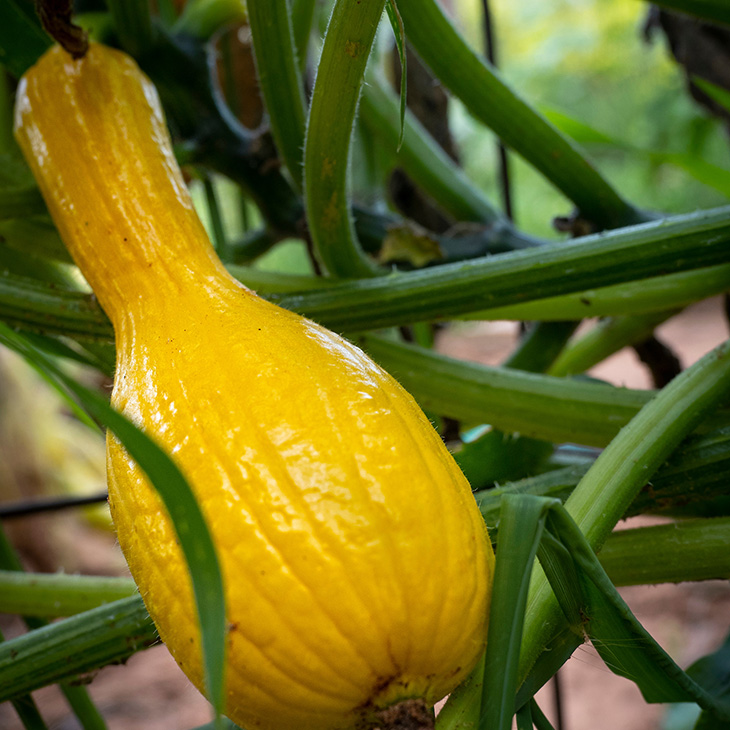
Fall garden planning should start now
Friday, July 17, 2020
With triple digit heat across the state, many Oklahomans are looking forward to fall and cooler weather. Although there will be several more weeks of intense heat, gardening enthusiasts can get a jumpstart on fall by planning their fall gardens now.
July through September is the optimal time to begin planting several vegetable varieties in order to have a bountiful fall harvest, said David Hillock, Oklahoma State University Extension horticulture specialist.
“A successful fall garden begins in the heat of the summer,” Hillock said. “Some of the best quality garden vegetables are produced and harvested during the fall season when warm, sunny days are followed by cool, humid nights. Under these climatic conditions, plan soil metabolism is low, which means more of the food manufactured by the plant becomes a high-quality vegetable product.”
Some tender vegetables that can be started in July and August and harvested before fall frosts include beans, cilantro, sweet corn, cucumber, pumpkin, and summer and winter squash. Hillock said to be sure and choose varieties that mature early and are disease resistant. Some semi-hardy plants, those that may continue to grow and be harvested after several frosts, include beet, broccoli, cabbage, carrots, garlic, leaf lettuce, parsnip and radish.
Some plants will grow more easily if gardeners start seeds early and then transplant the seedlings later. Growing seedling plants under partial shade and with insect protection is easier than seeding directly in the garden.
The actual time of planting depends on the length of time required to produce a crop. Some crops may produce a crop in 20 to 30 days. This allows gardeners to take advantage of successive planting for a continuous supply throughout the growing season.
“A successful garden depends in part on desirable garden soil. Make sure the soil absorbs water readily and doesn’t form a crust when drying,” he said. “Gardeners want the soil to drain sufficiently so it doesn’t become waterlogged. A porous soil contains more air, which is necessary for vigorous root growth. Remember, the soil also must contain nutrients. Additional fertilizers may be beneficial to stimulate growth and production.”
The summer months of July and August involve high soil temperature, high light intensity and rapid drying of the soil, resulting in an increase in the issue of obtaining a uniform stand of plants. Hillock said achieving a full stand of plants in the heat of summer may require special treatments. This could include shade over rows when seeded, and supplemental watering to reduce soil temperature and aid in seed germination.
Viable seed requires a trifecta of proper temperature, adequate moisture and sufficient oxygen in order to germinate. Vegetable seeds should not be planted any deeper than three times the diameter of the seed.
“For example, a carrot seed shouldn’t be planted any deeper than a quarter of an inch. However, at this depth, death of the seed would occur due to high temperatures,” he said. “To achieve proper temperature and adequate moisture, apply mulch over the row following planting and watering. Straw, bark and wood chips are good choices.”
Insects and weeds can be more prevalent this time of year so check frequently for insect activity and weed growth and use appropriate control measures. The mulch used to protect the seeds from the heat also will help keep weeds in check.
“To extend your gardening time even further, consider using cold frames and row covers,” Hillock said. “Salad crops are quite successful if grown in cold frames and harvested on an as-needed basis well into the winter months.”
Ray Campbell, the original host of the popular television program Oklahoma Gardening, has some great tips for fall gardening in this segment of the show.
For more information on planting a fall garden, check out OSU Cooperative Extension Fact Sheet HLA-6009 Fall Gardening.
MEDIA CONTACT: Trisha Gedon | Agricultural Communications Services | 405-744-3625 | trisha.gedon@okstate.edu
